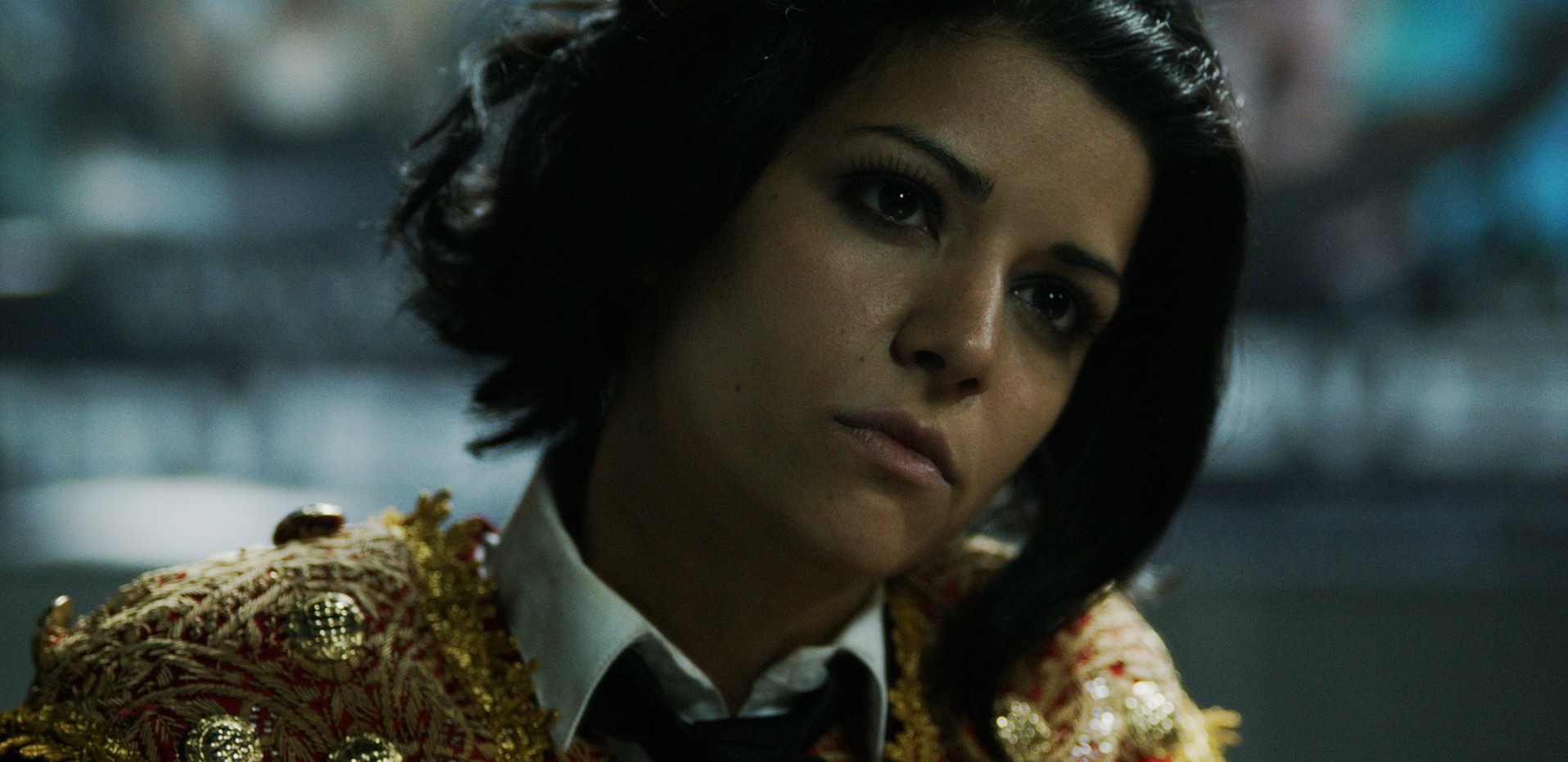All About E, directed by Louise Wadley, is a refreshingly good Australian film, showing at the Melbourne Queer Film Festival. It tells the story of E (Mandahla Rose), who has given up playing classical clarinet to pursue her career as a successful DJ. She works at a nightclub on Oxford Street, but feels that her performances are not really true to herself. One night, she gets wasted and ends up accidentally taking home half a million dollars she finds in a cab. She decides to keep the money and run away with her best friend, Matt (Brett Rogers). Incidentally, the money happens to be owned by her controlling methamphetamine-dealing boss, Johnny (Simon Bolton), He soon realises that she has the money and starts chasing her across Australia. Woven into this plot are idyllic flashbacks of E’s relationship with her ex-girlfriend, Trish (Julia Billington). E still pines for Trish, and the second half of the film is about her attempt to win Trish back, whilst also hiding from Johnny by idling through rural New South Wales.
The film opens at the club, with E having sex in a toilet stall, causing her to be late to her DJ set. Regardless, the crowd goes wild. It’s a clunky opening, and the introduction of her best friend, Matt and her boss, Johnny is somewhat awkward and clichéd. After this, however, the film gets much better. The storyline is simple, but works and the plot is enough to sustain the film. For me, the film’s real drawcard was Mandahla Rose, who is blessed with bucketloads of charisma, such that even her sulking and sneering is sexy. She plays both gruff sass and pained vulnerability impressively well, which lends her character a well-roundedness that is lacking from the supporting characters.
All About E also offers an insight into rural, migrant and queer communities. E exists in all three of these communities, and finds their values conflicting. She was raised in Newcastle by her conservative parents who emigrated from Lebanon. They love her dearly, but they don’t approve of her choice to be a DJ and her mother accuses her of shaming their family. E is also too scared to tell her parents that she’s a lesbian, and when they come to visit, forces Trish to pack her things and move out for three days. (In many ways, the storyline echoes Desiree Akhavan’s 2014 film Appropriate Behaviour.) I appreciated this depiction on the cultural struggles of second-generation Australians – something we have not seen since Looking for Alibrandi (2000). I also appreciated Matt’s character, and the nuanced insights it yields into Sydney’s gay scene: “Here I am, a fat Irish redhead, looking for love in a meat market full of people all as superficial as you.” His friendship with E is sweet, but his character is not well-developed, though Rogers acts it very well.
Another asset of the film is the sex scene between E and Trish. It offers an interesting comparison to the infamous sex scene in Blue Is the Warmest Color (2013). The scene in All About E is less a pornographic pandering to the male gaze, and more a tenderly portrayed moment of intimacy. Manohla Dargis wrote in The New York Times that the sex scene in Blue Is the Warmest Color was self-indulgent and predatory. She cites the response of Julie Maroh, the author of the graphic novel on which Blue Is the Warmest Color is based. Maroh wrote, “except for a few passages – this is all that it brings to my mind: a brutal and surgical display, exuberant and cold, of so-called lesbian sex, which turned into porn, and made me feel very ill at ease.” Not everyone agrees with Dargis and Maroh and this review is not the place to weigh in on the discussion. The point I would like to make is that All About E offers an alternate portrayal of lesbian sex that is progressive because it is distinctively not pornographic. E and Trish make love authentically, that is with little regard for the viewer, male or female.
I would recommend All About E. I particularly enjoyed the soundtrack, which heavily featured clarinet concertos, as a means of harking back to E’s previous passion. (A side note is that there are a few obscure clarinet references that may be lost on the general population. For example, Trish buys E a clarinet, and E exclaims, “It’s a Buffet!” By this, she does not mean she is about to eat it. ‘Buffet’ is short for ‘Buffet Crampon’ – a brand of high-end clarinets.) The cinematography is also much better in the second half of the film than the first. The opening scene in the club seemed stilted, but I had forgotten about it completely by the final scenes, where we see E and Matt meandering through a picturesque outback landscape, tastefully flanked by sinewy trees and sparse fencing. All About E is a fun movie and a thought-provoking portrayal of those underrepresented communities vital to the complex culture that constitutes modern Australia.

